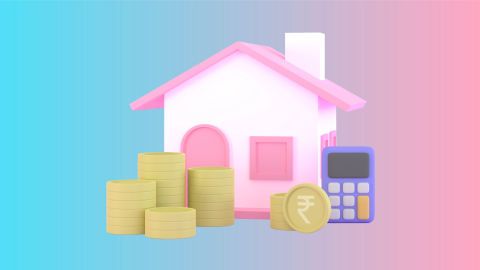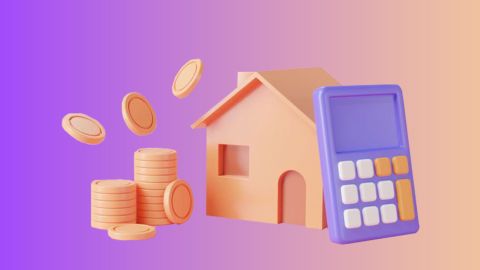The House Rent Allowance (HRA) stands as a cornerstone in the salary structure of numerous employees across India. It serves as a vital buffer against the soaring expenses of urban living, offering relief by diminishing the taxable salary for individuals renting accommodations. Amidst the complexities of tax filings, one common query persists: "Can I claim HRA if not mentioned in Form 16?" This article delves into the intricacies of House Rent Allowance (HRA) claims, elucidating the impact of Form 16 and unveiling strategic alternatives for claiming HRA.
Form 16 and its relevance to HRA
Form 16 is a document issued by an employer summarizing the salary paid to an employee and the amount of tax deducted at source (TDS). If HRA is a part of your salary break-up but is not reflected in your Form 16, you don't have to raise the alarm. You can claim HRA even if it's not cited in your Form 16 because Form 16 is merely a TDS certificate, not a comprehensive statement of your overall income and deductions.
Can I claim HRA if not mentioned in Form 16?
The answer is a resounding yes. The absence of HRA in Form 16 is not a barrier to claiming it. As an employee, you are entitled to claim HRA as a tax benefit even if your employer has not accounted for it in your Form 16, as long as you fulfil the stipulated conditions for claiming it. This can significantly reduce your tax liabilities and increase your take-home pay.
How to claim HRA if not mentioned in Form 16?
Claiming HRA when it’s not mentioned in Form 16 involves a few steps. To start, you need to gather the required documents, including rent receipts and the rent agreement. If your rental expenses go above Rs. 1 lakh per year, you must also provide the PAN details of your landlord as mandated by law.
Firstly, let your employer know about your HRA claim at the time of tax proof submission. But in case your employer doesn't take into account your HRA claim, don’t panic. You can claim the HRA directly on your Income Tax Return (ITR).
To do this, simply deduct the HRA exemption amount from your total income under 'Salaries' while computing your tax liability. The Income Tax Department may require you to submit rent receipts to support your claim, so ensure you have all necessary documents on hand.
Eligibility conditions for claiming HRA
Claiming HRA is not a free for all. There are certain eligibility conditions that you must meet to make a legitimate claim. Firstly, you must be living in a rented house. If you live in your own house, you can't claim HRA, even if it's part of your salary structure. Secondly, as mentioned, you must be able to provide supporting documents like rent receipts and the rent agreement.
Alternative ways to claim rent relief
If you’re not eligible to claim HRA, you can still benefit from Section 80GG of the Income Tax Act. This provision is a lifeline for individuals who do not receive HRA as part of their salary. It allows you to claim a deduction for rent paid, provided neither you nor your spouse or minor child owns the residence where you currently live.
Computation of HRA
The computation of HRA is a straightforward affair. It’s calculated as the least of the following three amounts:
- The actual HRA allowance that you receive from your employer.
- The amount of rent you pay, minus 10% of your basic salary.
- 50% of your basic salary, if you live in a metro city, or 40% of your basic salary if you're in a non-metro city.
The HRA is a critical component of the salary structure, and understanding how it works can provide you substantial relief in taxation. The fact that HRA is not mentioned in Form 16 is no deterrent to claiming it if you fulfil all the requirements. Whether you claim it through your employer or while filing your ITR, ensuring you have all the necessary supporting documents on hand will make the process smooth.
Renting vs. buying: Which option is better?
Choosing between renting and buying a home is a pivotal decision with profound lifestyle and financial implications. It necessitates thoughtful deliberation, considering long-term aspirations, financial stability, and personal inclinations.
Renting confers flexibility and exempts tenants from the burdens of maintenance, making it an appealing option for frequent movers or those averse to homeownership responsibilities. Conversely, purchasing a home, facilitated by financial tools like a home loan, is perceived as an investment that may appreciate over time. It bestows the security of ownership and empowers homeowners to personalize their living environment.
Tax advantages of homeownership
In India, acquiring a house entails a multitude of tax benefits. Foremost among these is the deduction allowable on home loan repayments under various sections of the Income Tax Act. Section 80C permits a deduction of up to Rs. 1.5 lakh for principal repayments, while Section 24(b) allows a deduction of up to Rs. 2 lakh on loan interest payments. First-time buyers may claim an additional Rs. 50,000 deduction on interest under Section 80EE. Furthermore, if the property is rented out, the entire interest paid is deductible. Finally, Section 80EEA extends a tax benefit of up to Rs. 1.5 lakh on interest payments.
Explore Bajaj Housing Finance Home Loan
Given the financial and tax advantages associated with homeownership, now is an opportune moment to explore home loan solutions with Bajaj Housing Finance. Offering competitive interest rates, flexible repayment options, and expedited processing, Bajaj Housing Finance empowers individuals to realize their homeownership aspirations.
Here's why opting for a home loan from Bajaj Housing Finance is advantageous:
- Extended repayment tenures: Benefit from repayment periods of up to 32 years, enabling you to select a plan aligned with your financial circumstances for more manageable repayments.
- Competitive interest rates: Initiate your journey to homeownership with attractive interest rates starting at just 7.99%* p.a., accompanied by EMIs as low as Rs. 722/lakh*, making homeownership more affordable.
- Tailored loan options: Customise your home loan to suit your specific requirements with flexible loan amounts and repayment terms, granting you greater control over the home-buying process.
- Top-up loan facility: Enhance your financial flexibility with a top-up loan, providing additional funds of up to Rs. 1 crore* or higher at competitive interest rates and minimal documentation, simplifying balance transfer management.
Seize this opportunity to fortify your financial strategy while achieving the dream of homeownership.




